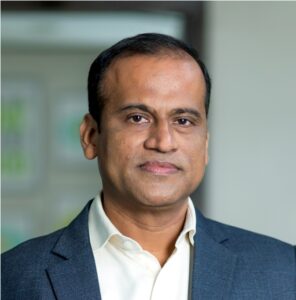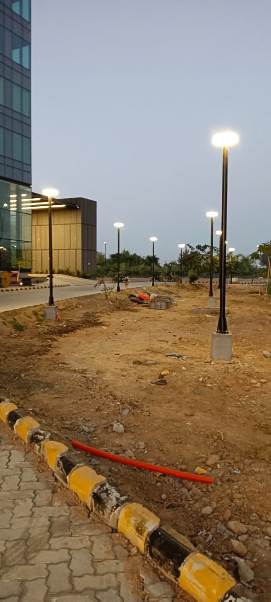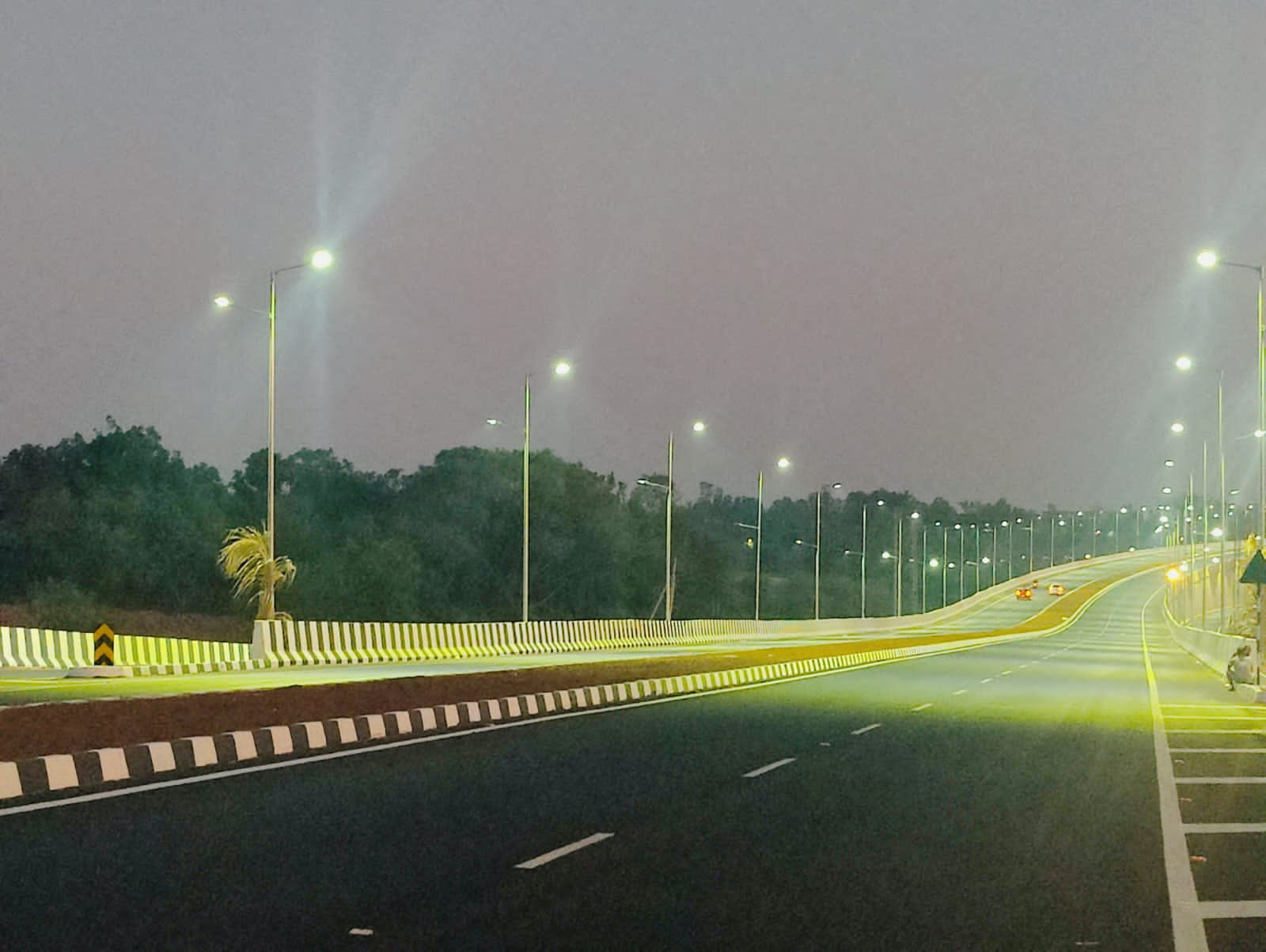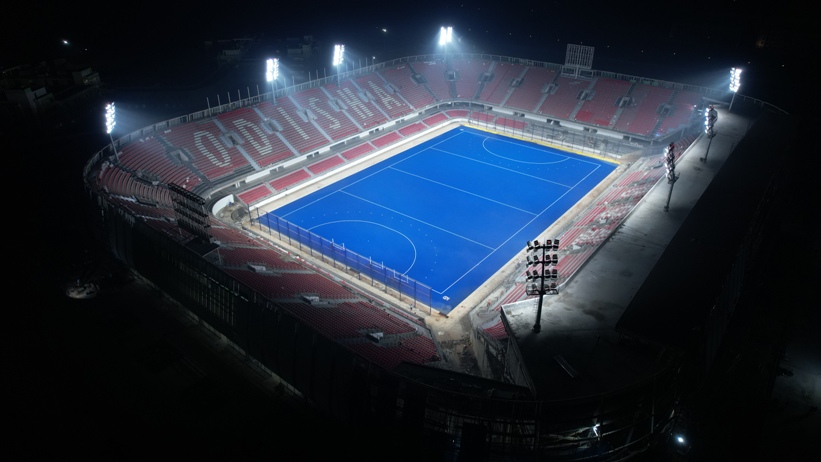LED lighting technology opens a big platform for integration: Bajaj Electricals
- July 7, 2023
With a longstanding presence of 85 years, Bajaj Electricals is widely regarded as the pioneer in India’s lighting landscape. Even in the relatively new LED lighting industry, Bajaj Electricals took the lead and has made immense contribution, not just in meeting local demand but also creating domestic manufacturing competence. In this insightful conversation, we have Rajesh Naik, Head – Lighting Solutions, Bajaj Electricals Ltd, speaking to Venugopal Pillai, on how Bajaj Electricals is leveraging its leadership in LED lighting technology to introduce value-added solutions like integrated lighting and human-centric lighting.

Lighting is a big avenue for energy efficiency. How is Bajaj Electricals, as a pioneer in the lighting industry, is continually conscious of the energy efficiency dimension?
Bajaj Electricals has been in the lighting industry for a very long time now – in fact, since 1938. Even in the LED lighting business, we have been amongst the oldest players. We have been driving energy efficiency through LED lighting for more than 12 years now.
We tied up with an international US brand “RUUD Lighting” – regarded as pioneers in the LED lighting business. That was at a time when LED was very new to India. That gave us quick learning and the lead.
We have always been working towards bringing latest technology to the market. We had “Trilux” as our partner. That gave us the edge in creating LED solutions for different segments – mostly in the commercial segment.
What is the broad break-up of the lighting business of Bajaj Electricals, in terms of consumer segments served?
We have almost equal contribution from both professional & consumer lighting segments. We refer to residential as “consumer lighting” and everything else as professional lighting. However, if you see the overall market mix, it is reverse. Around 60 per cent is consumer lighting and 40 per cent is professional lighting. This gives us lot of scope for growth. Due to this, we have integrated both consumer and professional lighting.
What constitutes the professional lighting segment of Bajaj Electricals?
 Though Bajaj Electricals is known more for outdoor lighting, we are also present in other segments. We are known as a strong player in the Industrial segment. We are also present in other segments like commercial, architectural lighting etc. We are working to make our presence stronger in these categories through adding New Products which armoire relevant to segment & value added solutions. Bajaj Electricals was the only company in the lighting arena that started manufacturing high-mast poles. It was a very big decision, and gave us leverage to penetrate into the infrastructure segment.
Though Bajaj Electricals is known more for outdoor lighting, we are also present in other segments. We are known as a strong player in the Industrial segment. We are also present in other segments like commercial, architectural lighting etc. We are working to make our presence stronger in these categories through adding New Products which armoire relevant to segment & value added solutions. Bajaj Electricals was the only company in the lighting arena that started manufacturing high-mast poles. It was a very big decision, and gave us leverage to penetrate into the infrastructure segment.
In the industry segment, we have done illumination of most power generation plants of NTPC.
What about exports?
We are getting regular export orders for high-mast poles. Our focus is on Middle East and African markets. The ME and African markets are similar to that in India.
In my view, there is a big opportunity even in Europe. There are many European countries that do not have funds available for retrofitting LEDs. But if there are PPP models created for funding, the markets can be tapped. We are in talks with some banks to check if funding would be possible.
What is China’s role as a competitor in the exports market?
Most of the LED chips and components for LED lighting are manufactured in China or Taiwan. They therefore have some cost advantage. But in terms of specifications, in terms of longevity of products, definitely there is preference given to Indian products.
In UAE for instance, specifications are very stringent. They were only taking products from Europe. Considering current cash position, customers from Middle East, they are looking for alternate suppliers – India or China.
They are looking at partners who can given good quality products. That is where there is a chance for the Indian industry to grow their exports.
What about competition from China products in India?
When it comes to like-to-like specification, we can easily compete with China. Thanks to EESL, that has expanded the market substantially.
Tell us about your involvement with EESL’s flagship programme like UJALA and SLNP.
Bajaj Electricals has been part of EESL’s UJALA programme since its launch. We got one of the initial orders released by EESL.
Then, SLNP (Street Lighting National Programme) was launched. That was originally an integrated model where the supplier quotes, installs and maintains the installation for five years. Our early order was that for South Delhi Municipal Corporation (SDMC). We are maintaining these SDMC streetlights even today.
We have sold 1.1 million street lights under SLNP. Over the last two years, around 60-70 per cent installation done by EESL (for street lights) is being done by Bajaj Electricals.
I would like to mention that EESL has now segregated the scope of suppliers under SLNP. Now there are luminaire suppliers, installers and maintenance operators.

The cost of LED has come down drastically over the years. Is there scope for further reduction?
LED technology is actually driven by the electronics. Not only are costs coming down but we are also trying to add value by adding features and improving efficiency.
LED lighting costs are coming down. If you see the CAGR of last 2-3 years, there is not much growth. Prices are dropping quarter-on-quarter by 5-10 per cent. Therefore, even if you have to maintain zero growth, you will have to sell 30-40 per cent more in volume!
In addition to costs coming down, efficiency is also increasing. A 36W LED fixture (baten) used to deliver 3,600 lumens earlier but now it is delivering 4,200 lumens, and with reduced prices! This is a double-whammy effect!
What is the average lumen per watt now, due to increasing efficiency?
Traditionally, we had 100 lumens per watt, which went up to 120 lumens, and now we have 150 lumens per watt.
We see a plethora of players in the LED lighting business. What is your take on the matter?
In its early days, the LED lighting industry was projected to grow at a CAGR of 40 per cent. Everybody was attracted!
All offer the same products, same warranties, same performance; but at the end of the day, it is the technology that counts. Anybody can get LED drivers, do wave soldering and have a ready product to sell. However, a good brand makes the difference.
Now, the trend is to integrate many other things with the lamp. Being a semiconductor, it creates an open platform. Let us take emergency lamps with power backup. It started with LED lamps, now we are talking of emergency LED batens.
Lighting players are integrating many things in LED lighting to add value, such as sensors and even speakers, cameras, etc.
LED lighting technology actually opens a platform of what can be integrated.
We hear that LED lighting can also be used to improve human wellness. Tell us more.
Yes, Bajaj Electricals is upgrading to human-centric lighting. Basically, this is about detecting the time of the day and providing optimum lighting so as to boost human wellness and productivity.
The spectrum of light changes throughout the day. To increase the productivity of people, you should have light levels and colours changing as well. Such LED technology exists in the developed world but we, at Bajaj Electricals, have introduced it in India.
For instance, we have a product called “Eye Care” for residential lighting that reduces the harmful blue component of light.
LED technology is very much there. How one can create value by leveraging this technology is most important!
We hear of some integrated lighting solutions that Bajaj Electricals has developed.
Yes, it is about offering not just lighting, but integrated solutions. We have some homegrown solutions, which can integrate various features. For instance, we have smart poles installed in Guwahati, Assam. This integrated smart pole has a public address (PA) system, camera and EV charger, apart from lighting. This was an initiative of local city administration.
We are now also helping the city administration to make this into a paying model, by trying to create a UPI (RuPay)-based paying system.
We are also in talks with National Highways Authority of India (NHAI) to offer similar integrated solutions.
After this LED invasion, what is the scope for conventional forms of lighting – GLS, sodium vapour, halogen, etc?
As of today, 85 per cent of lighting is LED-based. The remaining 15 per cent is there, mostly in GLS category. Sodium vapour, etc are only for replacement; no new installations are is taking place. GLS is the cheapest form of lighting and is still somewhat popular. In winter season, for instance, sales of GLS bulbs tend to increase.

Do you think India’s dependence on imported LED drivers is reducing?
Till around five years ago, we were mostly importing LED drivers. Now, hardly 10 per cent is imported. Everything is designed and manufactured in India. Most of the government projects insist of local production. That forced India to start manufacturing.
For Bajaj being a very strong brand. How do you see the years ahead and what would be your growth drivers?
Though there are many areas where “LED-fication” has happened, there are some sunrise segments that we think are going to grow much faster than others.
New sectors like airports, data centres. We are also closely looking at national initiatives like UDAAN, NHDP, Sagar Mala, Khelo India, etc.
Talking about Khelo India, for instance, nobody had an indigenous sports-lighting product. They were all being imported. We invested in that and got very good response from the market. The Bhubaneswar hockey stadium in Odisha where the FIH Men’s Hockey World Cup 2023 was hosted was illuminated by us.


